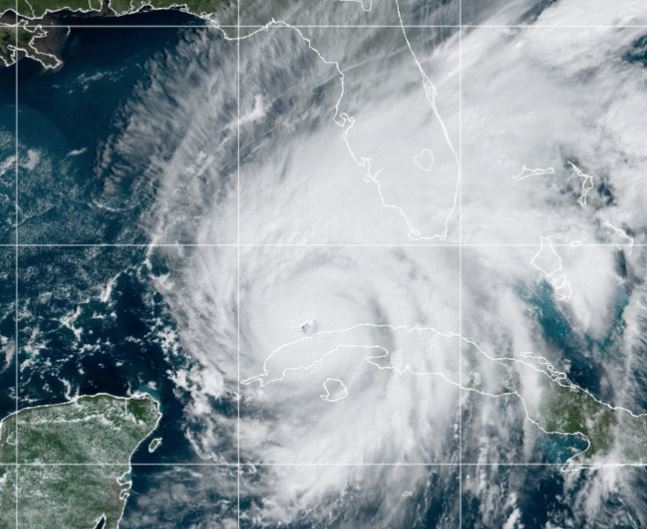
The combination of seasonal crops, livestock, nursery and aquaculture products potentially lost as a result of category 4 Hurricane Ian will likely be valued between $787 million and $1.56 billion, University of Florida economists predict.
The estimate was released as part of a new document, “Preliminary Assessment of Agricultural Losses and Damages resulting from Hurricane Ian,” from the UF/IFAS Economic Impact Analysis Program.
“Even though the coast – an area with comparatively less agricultural production than inland areas – bore some of the worst impacts of the storm, the strong winds and heavy rains battered a wide swath of the peninsula that includes over 5 million acres of agricultural land,” said Christa Court, director of the program and assistant professor in the UF/IFAS food and resource economics department. “This estimate only accounts for production losses, or changes in expected revenues for the current calendar or market year; citrus, for example, had not yet begun harvesting, and some fall vegetables, like tomatoes and peppers, were already planted.”
Some commodities were already looking at lower expected production due to a hard freeze event in January that affected much of the same acreage, she added.
Program Specifics
The UF/IFAS Economic Impact Analysis Program conducts assessments after any event that disrupts the standard operations of Florida’s agriculture industry; usually, the surveys are deployed after natural disasters like hurricanes, floods and freezes, but have more recently included assessments of the impacts from the COVID-19 pandemic.
“Southwest counties that got hit the hardest by Hurricane Ian have remained in rescue and recovery mode. We anticipate our assessments will not be complete for several weeks,” Court said. “Our preliminary estimate is a range, a wide range, to account for many of these unknowns. What isn’t destroyed might have diminished yield or quality, which will not be apparent for weeks or months, and then even more effects can appear in the long-term.”
Court and her colleagues began collecting baseline data for agricultural losses and damages resulting from tropical cyclone events in 2016. Since then, the program has continued to improve its baseline and impact databases for these types of analyses.
Even with this comparison data available to the research team, analyzing Hurricane Ian’s impacts remains complicated, as the preliminary assessment notes. It made landfall not far from 2017’s Hurricane Irma, but it cut across toward the east coast, rather than north through the entire peninsula. More importantly, Ian was a more powerful storm, bringing hurricane-strength (74-156 mph) winds to nearly 1.2 million acres of agricultural lands.
Predictions
Despite heavy flooding prohibiting full assessments of some fields, the researchers collected some visual assessments that indicate what those larger impacts may be. Among their predictions:
- Citrus crops are expected to sustain significant production losses ($147 million to $304 million), depending on the level of fruit drop, damage to branches, and impacts due to heavy precipitation and flooding.
- Vegetables and melons are expected to sustain significant production losses ($208 million to $394 million), with impacts heavily dependent on the ability (or inability) to replant damaged or destroyed crops.
“Our goal is to provide a rapid assessment on a credible range of the potential losses associated with Hurricane Ian,” Court said. “As assessments are still ongoing, it’s not possible to narrow the range further at this time or to provide estimates for specific crops or commodities.”
Court said the survey will remain open for an undefined amount of time. The program will release a full report once analyses are completed.









